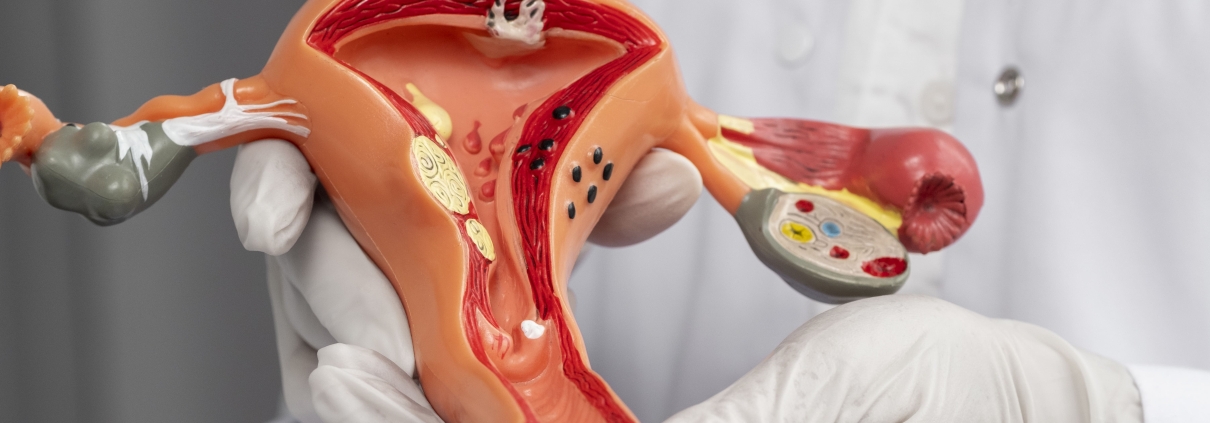Can Uterine Artery Embolisation Treat Multiple Fibroids?
Uterine fibroid embolisation (UFE), also known as uterine artery embolisation, offers a minimally invasive, effective solution for women dealing with multiple uterine fibroids. If you’re struggling with symptoms like heavy bleeding, pelvic pain, or bloating caused by multiple fibroids, UFE could provide relief without the need for major surgery. This comprehensive guide explores how uterine fibroid embolisation for multiple fibroids works, its benefits, and why it’s an excellent choice for managing multiple fibroids in one procedure. Read on to discover how this treatment can help you regain control of your health and well-being.
What Is Uterine Fibroid Embolisation (UFE)?
Uterine fibroid embolisation is a proven, non-surgical procedure designed to treat multiple uterine fibroids by cutting off their blood supply. Fibroids are non-cancerous growths in the uterus that can cause symptoms such as heavy menstrual bleeding, pelvic pressure, and discomfort. UFE targets all fibroids simultaneously, regardless of their size or location, making it an ideal option for women with multiple fibroids.
How Does UFE Work?
The procedure involves the following steps:
- Minimally Invasive Access: A radiologist makes a small incision, typically in the wrist or groin, to insert a thin tube called a catheter into the uterine arteries.
- Blocking Blood Flow: Tiny particles are injected through the catheter to block the blood vessels feeding the fibroids. This cuts off the nutrients fibroids need to grow.
- Fibroid Shrinkage: Over weeks to months, the fibroids shrink, reducing symptoms like pain, heavy bleeding, and pelvic pressure.
According to the Society of Interventional Radiology, UFE for multiple uterine fibroids is effective in 85–90% of cases, with most women experiencing significant symptom relief within weeks.
Why Choose UFE for Multiple Fibroids?
Uterine fibroid embolisation for multiple fibroids stands out as a preferred treatment for women due to its unique advantages. Unlike surgical options like myomectomy or hysterectomy, UFE addresses all fibroids in a single session, offering a comprehensive solution with minimal disruption to your life.
Key Benefits of UFE
- Treats All Fibroids at Once: By targeting the shared blood supply, UFE effectively addresses multiple fibroids, whether small, large, or located deep within the uterine wall.
- Non-Surgical and Uterus-Preserving: UFE avoids large incisions and preserves the uterus, which is crucial for women who wish to maintain fertility or avoid invasive surgery.
- Quick Recovery: Most women return home the same day and resume normal activities within 7–14 days, compared to weeks or months for surgical recovery.
- High Success Rate: Studies, such as those published in the Journal of Vascular and Interventional Radiology, report that 85–90% of women experience significant symptom relief, including reduced bleeding and pelvic pain.
- Cost-Effective: With no need for extended hospital stays or heavy pain medication, UFE is often more affordable than surgical alternatives.
For women seeking a less invasive option, UFE provides a balance of effectiveness and convenience, making it a compelling choice.
How UFE Compares to Surgical Options
When considering treatment for multiple fibroids, it’s helpful to compare UFE to surgical alternatives like myomectomy and hysterectomy.
UFE vs. Myomectomy
- Myomectomy: This surgery involves removing individual fibroids, which may require multiple procedures if fibroids are numerous. It involves larger incisions, general anaesthesia, and a recovery period of 4–6 weeks.
- UFE: Targets all fibroids in one procedure through a small incision, typically under local anaesthesia. Recovery is faster, usually within 1–2 weeks, and there’s no need to remove tissue from the uterus.
UFE vs. Hysterectomy
- Hysterectomy: This procedure removes the entire uterus, eliminating fibroids but also ending fertility. It requires major surgery, general anaesthesia, and a recovery period of 6–8 weeks.
- UFE: Preserves the uterus, offering a fertility-friendly option. It avoids major surgery and has a shorter recovery time, making it less disruptive.
UFE’s minimally invasive nature and ability to treat multiple fibroids in one go make it a strong alternative for women who want to avoid the risks and recovery associated with surgery.
Who Is a Good Candidate for UFE?
UFE is suitable for many women with multiple uterine fibroids, particularly those experiencing symptoms such as:
- Heavy or prolonged menstrual bleeding
- Pelvic pain or pressure
- Bloating or abdominal discomfort
- Pain during intercourse
- Frequent urination due to pressure on the bladder
Is UFE Right for You?
UFE may be an excellent choice if you:
- Have multiple fibroids and want to avoid repeated surgeries.
- Wish to preserve your uterus for fertility or personal reasons.
- Prefer a minimally invasive procedure with a shorter recovery time.
- Are seeking relief from fibroid-related symptoms without major surgery.
However, uterine fibroid embolisation for multiple fibroids may not be suitable for women with certain conditions, such as active pelvic infections or specific fibroid types. Consulting a specialist, such as those at Minima Radiology, can help determine if UFE aligns with your health goals.
What to Expect During and After UFE
Understanding the UFE process can help ease concerns and prepare you for the procedure.
During the Procedure
- Duration: The procedure typically takes 1–2 hours.
- Anaesthesia: Local anaesthesia or mild sedation is used, avoiding the risks of general anaesthesia.
- Process: A radiologist uses imaging technology to guide the catheter to the uterine arteries, ensuring precision.
After the Procedure
- Immediate Recovery: Most women go home the same day and rest for 1–2 days.
- Side Effects: Mild cramping or temporary changes in menstrual cycles are common, but usually resolve with over-the-counter medication.
- Symptom Relief: Many women notice improvements in symptoms like bleeding and pain within weeks, with fibroids continuing to shrink over months.
According to the American College of Obstetricians and Gynaecologists, UFE is a safe and effective option for most women with symptomatic fibroids, with a low risk of complications.
Addressing Common Questions About UFE for Multiple Fibroids
Can UFE Treat All Types of Fibroids?
Yes, UFE is effective for various fibroid types, including submucosal (inside the uterine cavity), intramural (within the uterine wall), and subserosal (on the outer uterine surface). It’s particularly beneficial for women with multiple fibroids, as it targets all growths simultaneously.
Will UFE Affect My Fertility?
UFE is considered a fertility-preserving option, unlike hysterectomy. While some studies, such as those in the American Journal of Obstetrics and Gynecology, suggest that UFE may impact fertility in rare cases, many women successfully conceive after the procedure. Discuss your fertility goals with a specialist to weigh the risks and benefits.
How Long Do Results Last?
While UFE significantly reduces fibroid size and symptoms, new fibroids may develop over time. However, many women remain symptom-free for years, and additional treatments are often unnecessary. Regular check-ups can help monitor your condition.
Emotional and Lifestyle Benefits of UFE
Beyond physical relief, UFE offers emotional and lifestyle benefits. Women often report:
- Increased Confidence: Managing symptoms like heavy bleeding and bloating can boost self-esteem and quality of life.
- Empowerment: Choosing a non-surgical, uterus-preserving option allows women to take control of their reproductive health.
- Minimal Disruption: The quick recovery time means less time away from work, family, or daily activities.
By addressing multiple fibroids in one procedure, UFE helps women reclaim their comfort and confidence without the stress of major surgery.
Why Choose Minima Radiology for UFE?
At Minima Radiology, our team of experienced radiologists specialises in UFE for multiple uterine fibroids. We offer:
- Personalized Consultations: Tailored advice to ensure UFE aligns with your health and lifestyle goals.
- Advanced Technology: State-of-the-art imaging for precise, effective treatment.
- Comprehensive Care: Support before, during, and after the procedure to ensure a smooth experience.
Contact Minima Radiology today to schedule a consultation and learn if UFE is the right solution for you.
Conclusion
Uterine fibroid embolisation for multiple fibroids offers a proven, non-surgical way to manage symptoms and improve your quality of life. By targeting all fibroids in a single procedure, UFE provides quick relief, preserves your uterus, and minimises recovery time. If you’re ready to explore a minimally invasive alternative to surgery, consult with a specialist to see if UFE is right for you. Take the first step toward renewed comfort and confidence—schedule a consultation with Minima Radiology today.





Leave a Reply
Want to join the discussion?Feel free to contribute!